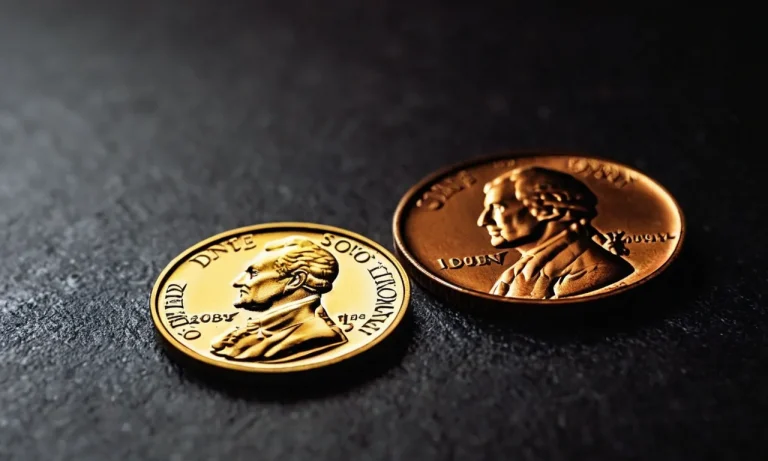What is nickel used for? Nickel is a versatile metal that plays an important role in our everyday lives. From the batteries in our phones to the stainless steel pots and pans we cook with, nickel is a modern necessity. But what exactly is nickel used for?
In this comprehensive guide, we’ll explore the many applications and uses of this industrial workhorse metal.
If you’re short on time, here’s a quick answer to your question: Nickel is primarily used to make stainless steel and other metal alloys stronger and more corrosion-resistant. It’s also used in batteries, magnets, coins, plating, and as a catalyst in chemical reactions.
Nickel in Stainless Steel and Alloys
Nickel is widely used in the production of stainless steel and various alloys due to its unique properties. Stainless steel contains a significant amount of nickel, typically ranging from 8% to 28%. This addition of nickel enhances the strength and corrosion resistance of stainless steel, making it ideal for a wide range of applications.
Stainless Steel
Stainless steel is a popular material used in the manufacturing of kitchen appliances, cutlery, and cookware, as well as in the construction of buildings, bridges, and pipelines. The addition of nickel to stainless steel helps to improve its resistance to corrosion, oxidation, and heat, making it highly durable and long-lasting.
Nickel also enhances the aesthetic appeal of stainless steel, giving it a shiny and polished appearance.
Super Alloys in Aerospace
Nickel-based superalloys are extensively used in the aerospace industry due to their exceptional strength, temperature resistance, and corrosion resistance. These alloys are used in the manufacturing of aircraft engines, turbine blades, and other critical components.
The addition of nickel in superalloys allows them to withstand extreme temperatures and harsh environments, ensuring the safety and reliability of aerospace systems.
Alloys for Pipes, Valves, and Fittings
Nickel is also used in the production of alloys that are specifically designed for pipes, valves, and fittings. These alloys, known as nickel alloys, offer excellent resistance to corrosion and high-temperature environments.
They are commonly used in industries such as oil and gas, chemical processing, and power generation. Nickel alloys ensure the integrity and longevity of piping systems, valves, and fittings, even in highly corrosive and demanding applications.
For more information on the applications of nickel in stainless steel and alloys you can visit this link.
Nickel in Batteries and Magnets
Nickel-Cadmium Batteries
Nickel-cadmium (NiCd) batteries were one of the first rechargeable battery types. They contain nickel oxide hydroxide and metallic cadmium as electrodes. NiCd batteries have a high energy density and can withstand high discharge rates.
However, they suffer from memory effect issues and contain the toxic heavy metal cadmium. As a result, NiCd batteries have largely been replaced by newer battery technologies in consumer electronics, though they are still used in some industrial applications.
Nickel-Metal Hydride Batteries
Nickel-metal hydride (NiMH) batteries were developed as an alternative to NiCd batteries. They use nickel oxyhydroxide for the positive electrode and a hydrogen-absorbing alloy for the negative electrode. NiMH batteries have up to 40% higher capacity compared to NiCd and do not contain toxic metals.
However, they still suffer from moderate memory effects. NiMH batteries are used in hybrid vehicles, motorcycles, power tools, and other applications requiring high capacity.
Lithium-Ion Batteries
Many modern lithium-ion batteries contain nickel. Nickel cobalt aluminum oxide (NCA) and nickel manganese cobalt oxide (NMC) are two common cathode materials used in Li-ion batteries. They provide high energy density, good thermal stability, and reduced costs compared to other Li-ion cathodes.
However, cobalt is quite expensive. As a result, research is ongoing into nickel-rich NMC and NCA materials that require less cobalt. Li-ion batteries with nickel cathodes power laptops, cell phones, power tools, electric vehicles, and numerous other devices.
Nickel in Permanent Magnets
Nickel alloys are used to produce strong permanent magnets. Ferrite magnets contain nickel while neodymium iron boron (NdFeB) magnets are plated with nickel for corrosion protection. Nickel plating also allows NdFeB magnets to be sintered at lower temperatures.
Samarium cobalt magnets may contain small amounts of nickel that optimize magnetic properties by stabilizing the material’s cubic crystalline structure. Permanent nickel-containing magnets are vital components of motors, generators, sensors, actuators, and numerous electrical devices.
Nickel Plating and Coinage
Nickel Plating
Nickel plating, also known as nickel electroplating, is a common industrial process used to deposit a layer of nickel onto a metal surface. This process is widely used in various industries, including automotive, aerospace, and electronics.
Nickel plating offers several benefits, such as increased corrosion resistance, improved wear resistance, and enhanced aesthetic appeal. It is often used to protect metal surfaces from rust and other forms of degradation.
Nickel-plated components can be found in products ranging from kitchen utensils to electronic devices.
Nickel in Coins and Currency
Nickel is extensively used in the production of coins and currency. In many countries, nickel is alloyed with other metals, such as copper, to create durable and cost-effective coins. For example, the United States five-cent coin, commonly known as the nickel, is made of a copper-nickel alloy.
Nickel coins are popular due to their durability and resistance to wear and corrosion. The use of nickel in coinage also helps to reduce production costs, as nickel is a relatively inexpensive metal.
It is worth mentioning that since 2012, the composition of the United States nickel has changed. The current nickel now consists of 75% copper and 25% nickel, whereas the previous composition was 25% copper and 75% nickel.
This change was made to address rising metal costs and ensure the continued production of the coin at an affordable price.
Nickel Catalysts and Chemical Applications
Nickel is widely used as a catalyst in various chemical reactions due to its exceptional properties. Its ability to undergo redox reactions and form stable complexes makes it an ideal choice for catalytic applications.
Let’s explore some of the significant uses of nickel as a catalyst and its role in chemical processes.
Hydrogenation and Desulfurization
One of the primary applications of nickel catalysts is in hydrogenation reactions. Hydrogenation is a process in which hydrogen gas is used to convert unsaturated compounds into saturated ones. Nickel catalysts play a crucial role in industries such as food processing, pharmaceuticals, and petrochemicals, where hydrogenation is a key step in the production of various products.
Nickel catalysts are also extensively employed in desulfurization processes. Sulfur compounds present in crude oil or natural gas can be highly detrimental to the environment and the performance of certain equipment.
Nickel catalysts facilitate the removal of sulfur compounds, resulting in cleaner fuels and reduced environmental impact.
Petroleum Refining
In the petroleum refining industry, nickel catalysts are used in various processes to enhance the efficiency and quality of fuel production. One such process is catalytic cracking, where heavy hydrocarbons are converted into lighter, more valuable products such as gasoline and diesel.
Nickel catalysts help break down the large hydrocarbon molecules into smaller ones, optimizing the yield of desired products.
Additionally, nickel catalysts are utilized in the reforming process, which transforms low-octane gasoline into high-octane gasoline by rearranging the hydrocarbon structure. This enables the production of cleaner-burning fuel with improved engine performance.
Synthetic Rubber Manufacturing
Nickel catalysts are vital in the production of synthetic rubber, a widely used material in the manufacturing of tires, belts, hoses, and various other rubber products. Synthetic rubber is manufactured through a process known as polymerization, where monomers are chemically bonded to form a polymer chain.
Nickel catalysts act as initiators in this reaction, enabling the efficient and controlled formation of rubber polymers.
Moreover, nickel catalysts are also involved in the production of other synthetic materials, such as plastics and resins. These catalysts play a crucial role in the polymerization process, ensuring the desired molecular structure and properties of the final product.
What Is Nickel Used For – Conclusion
As we’ve seen, nickel has become an essential material in our modern world thanks to its unique properties, affordability, and availability. From improving our infrastructure to powering our devices, this versatile metal finds its way into nearly every industry.
Next time you use stainless steel cookware or charge your phone, take a moment to appreciate the critical role played by nickel in making your life easier and more efficient.




